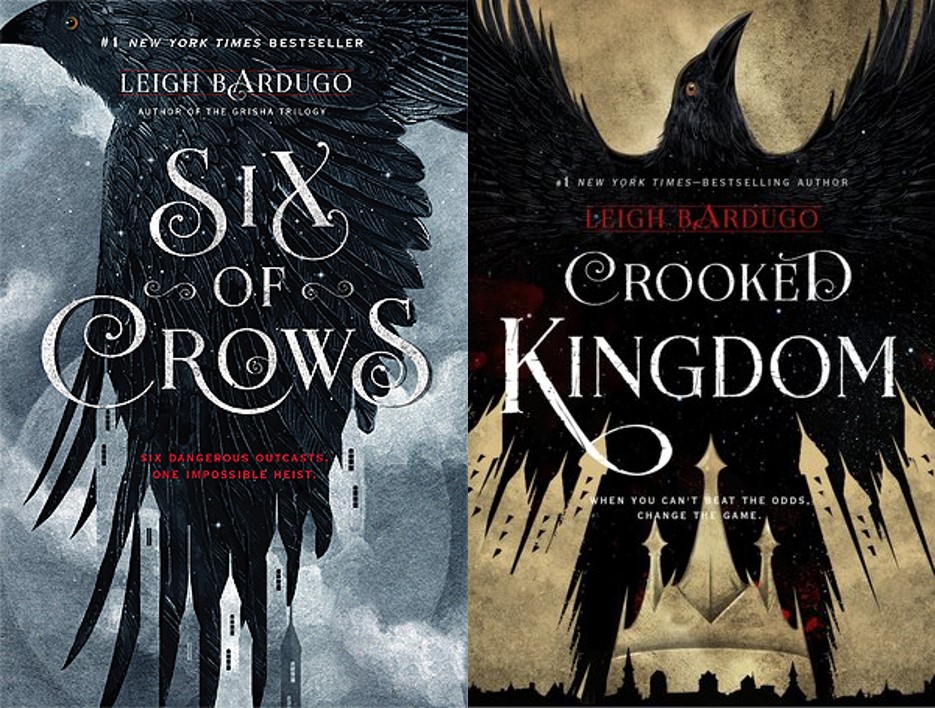By Jordan Jenkins
Although most widely known for its formulaic dystopian tales or cheesy and melodramatic romances, the reality is that young adult umbrella genre of books has a whole lot to offer in terms of variety and quality. Although initially neglected in the wave that brought us cultural phenomena like Twilight and The Hunger Games, the diversity of the genre is finally starting to come into the forefront. Movies like Love, Simon, which is based on the 2015 young adult novel Simon vs. The Homosapiens Agenda and follows the life of a closeted teenager, and the upcoming movie adaption of the 2017 young adult novel The Hate U Give, which addresses issues of police violence through the eyes of an African American girl, illustrate this growth. Yet, so many amazing books still fly under the radar of mainstream audiences, although often being superior to many of those that have  found success. I consider the Six of Crows series to fit into this category.
found success. I consider the Six of Crows series to fit into this category.
The Six of Crows series is a fantasy duology written by author Leigh Bardugo, comprised of 2015’s titular Six of Crows and its 2016 sequel, Crooked Kingdom. For the most part, both of the books take place in the city of Ketterdam, which is based upon the real-world city of Amsterdam and serves as the capital of the fictional island nation of Kerch. The books are told primarily from the perspective of six characters — all members of a Ketterdam-based gang known as the Dregs — and follows all of them as they undergo a daring heist and are then forced to deal with the consequences.
The fantasy world in which the city exists is an extension of that seen in Bardugo’s previous trilogy of books, and is perhaps most notable for its inclusion of the Grisha, a widely persecuted segment of the human population that have the ability to manipulate basic matter in their own specialized ways. The world also features a myriad of fictional nations and locations, each with their own developed cultures and dynamics. For example, the nation of Kerch is portrayed in the books as being a melting pot of different cultures where the economy is reliant on international trade, whereas the northern nation of Fjerda is portrayed as being more nationalistic and isolationist in nature. All of this is executed extremely well, and leads to a world that feels rich and complex in a way similar to our own.
Similarly, the primary characters themselves are similarly complex and diverse, with all six of them having distinct backgrounds, skills, voices that come through when they narrate. Kaz Brekker, born into poverty, uses his cold and calculating nature to put him near the top of Ketterdam’s criminal underworld; Inej Ghafa, a member of the nomadic Sufi peoples captured and sold into slavery, is notable for her incredible slyness and ability to spy; Nina Zenik, a bold Grisha from the eastern nation of Ravka, uses her ability to influence a person’s internal organs to best her enemies; Matthias Helvar, a bruting warrior from Fjerda, employs the skills and values instilled in him while in his native land; Jesper Fahey, a charismatic boy from the western Novya Zem, is known for his abilities as a sharpshooter; Wylan Van Eck, the runaway son of a wealthy merchant, uses his knowledge of chemistry for the creation of explosives and other weaponry. Breaking with what many expect from young adult novels, these characters, their respective backgrounds, and motivations are well fleshed-out and make them interesting narrators.
On top of that, their interactions with each other are engaging and l found myself to be incredibly invested in their relationships. The principles on which the Dregs operate are best summarized by their motto: “No mourners, no funerals.” Still, the books illustrate how they defy their initial wariness and caution and form friendships and romances as a result of their shared experiences.
To touch on the plot, I find that the books, which revolve around a world-changing scientific advancement impacting the powers of the Grisha, a related large-scale heist, and the resulting problems and conflicts that arise in the aftermath is so great because it allows for the settings and characters to shine through. It features conflicts that feel realistic and truly suspenseful and many well-written action scenes that place characters in situations where wit is key. The plot, the settings, and the characters all work together to create a series that is incredibly engaging, genuinely fun to read, and has become one of my personal favorites. I would recommend the Six of Crows series to just about anyone who is interested in fantasy genres or reading in general.
